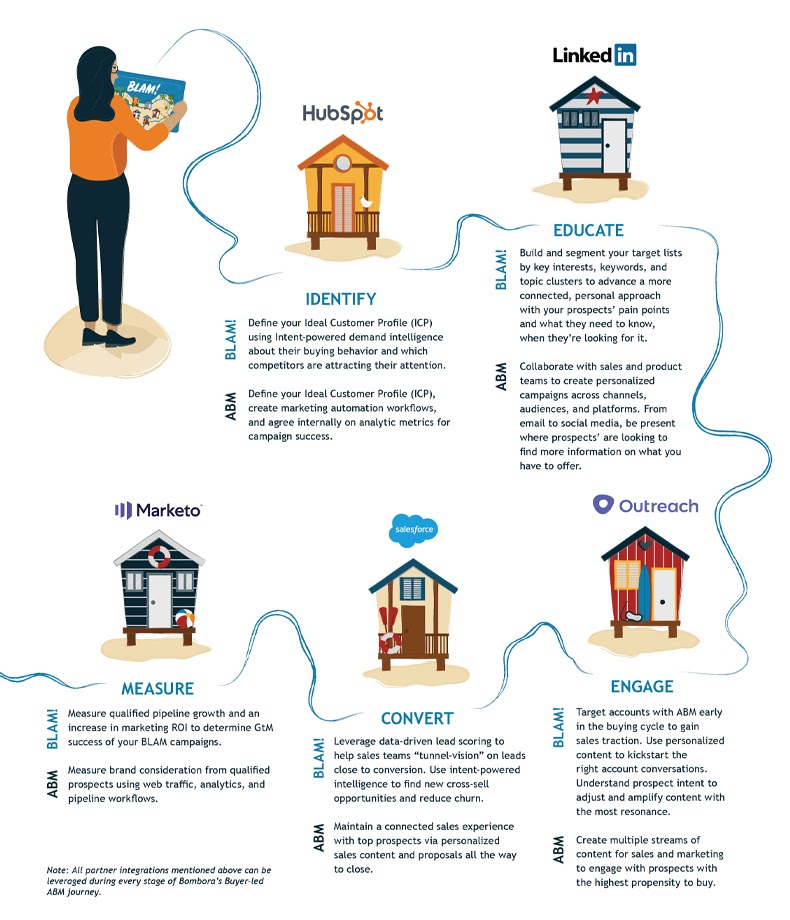Account-based marketing (ABM) was created to break through the noise. But what if we've been doing it backward all this time?
The basic strategy behind ABM is to align our marketing and sales efforts around "target accounts" that are based on the firmographics we believe are most likely to qualify companies that will buy our products or services. The thought is, if your company is a certain size, structure, and in a certain industry or location, you'll be more likely to buy from us.
That makes sense in principle, which is why companies typically achieve great results when they switch to an ABM strategy. We shouldn't expect to sell elaborate CRMs or enterprise marketing automation software to mom-and-pop shops, for example.
So, by focusing on companies that meet our ideal customer firmographics, we can save our marketing dollars and sales outreach for prospects that fit our ideal customer profile (ICP) traits and show them how our B2B products are the solution they've been looking for.
But does all that activity mean we're actually understanding the needs of our customers?
Firmographics don't tell the whole story
As a consumer, you undoubtedly fit into a variety of categories based on your age, sex, location, etc., but you would probably also agree that you don't have the exact same interests as everyone else in your demographic. Not all women like mascara, and not all men want power tools. And even if they do, you can't predict based on those traits alone that they're ready to buy those things right now.
So why do we think that logic extends to businesses?
You can see where the traditional approach to ABM begins to unravel around the edges by noting some of the biggest challenges marketers face with ABM strategies: namely, figuring out how to personalize their digital marketing campaigns at scale and knowing which companies are at the right stage in the buying cycle.
For example, just because you know that "businesses in the IT industry with 1,000-10,000 employees" typically buy your products doesn't mean that your standard monthly newsletter will resonate with the specific target accounts on your list, or that they're actually interested in buying your product right now.
That is the root of the issue with traditional ABM: We end up knowing a ton about our customers... without actually knowing them at all.
That's why so many B2B buyers tune marketers out. B2B buyers are completely inundated with ads and emails for products and services that they should be interested in based on a firmographic analysis; but, if the buyer is not actively in-market for those solutions, it can lead to wasted spend, with both the marketer and buyer feeling disappointed at the outreach results.
Switch to 'Buyer-Led ABM'
To better serve ourselves and our buyers, it's time to flip the ABM strategy on its head. Instead of picking accounts based on traits and trying to generate interest, we need to start prioritizing our target customers based on their level of interest and then qualifying them by firmographic characteristics.
We need to rethink the traditional ABM model and put future customers at the heart of our digital marketing strategy development process. It's ABM with heart—or, as we like to call it at Bombora, Buyer-Led ABM.
Buyer-Led ABM is much like it sounds: You keep the same focus and efficiency of traditional ABM, but now you let your buyer tell you when they're interested in your solution, and what they want to learn about it.
How, you ask? With intent data.
Almost half of B2B buyers arrive at a solution by doing their own independent research online. Intent data providers are able to collect data about that research and provide you with a simplified report ranking your target accounts based on the level of active interest they're currently showing in your solution or related topics.
Intent data helps solve some of ABM's biggest challenges:
- By knowing which topics your buyers are most interested in, you can customize your messaging and outreach to align with the topics of greatest interest to them.
- By understanding which prospects are most actively looking for your solution, you can know which of them will be most receptive to marketing messages at a particular time.
- By learning what competitors are distracting your prospects from your brands' value, you'll gain competitive intelligence on where you need to boost awareness and differentiation.

Source: Bombora’s guide to Buyer-led ABM.
Established intent data providers can even integrate the data into your marketing stack, so you can tailor performance and organic marketing campaigns to serve personalized messaging in real-time without needing to retrain your team or switch over to a new platform.
Your buyers will feel like you miraculously showed up in just the right place at just the right time, and you can be confident that your messaging and outreach is addressing the interests and needs of your customer— not just their "category."
So, are you ready to flip your ABM and see which buyers can't wait to hear from you? Check out our latest guide to learn more.
This article is authored by Kate Athmer, VP of growth at Bombora, where she is primarily responsible for generating demand and fueling growth by finding ways to help customers extract more value from their investments in Intent data.




